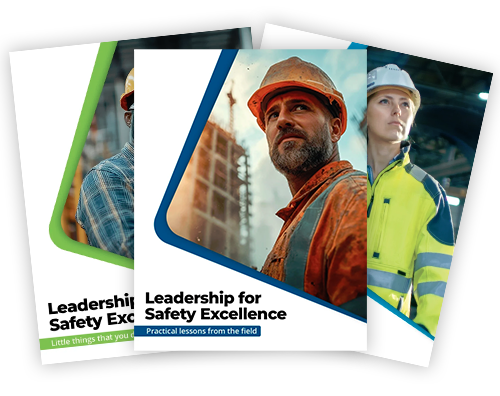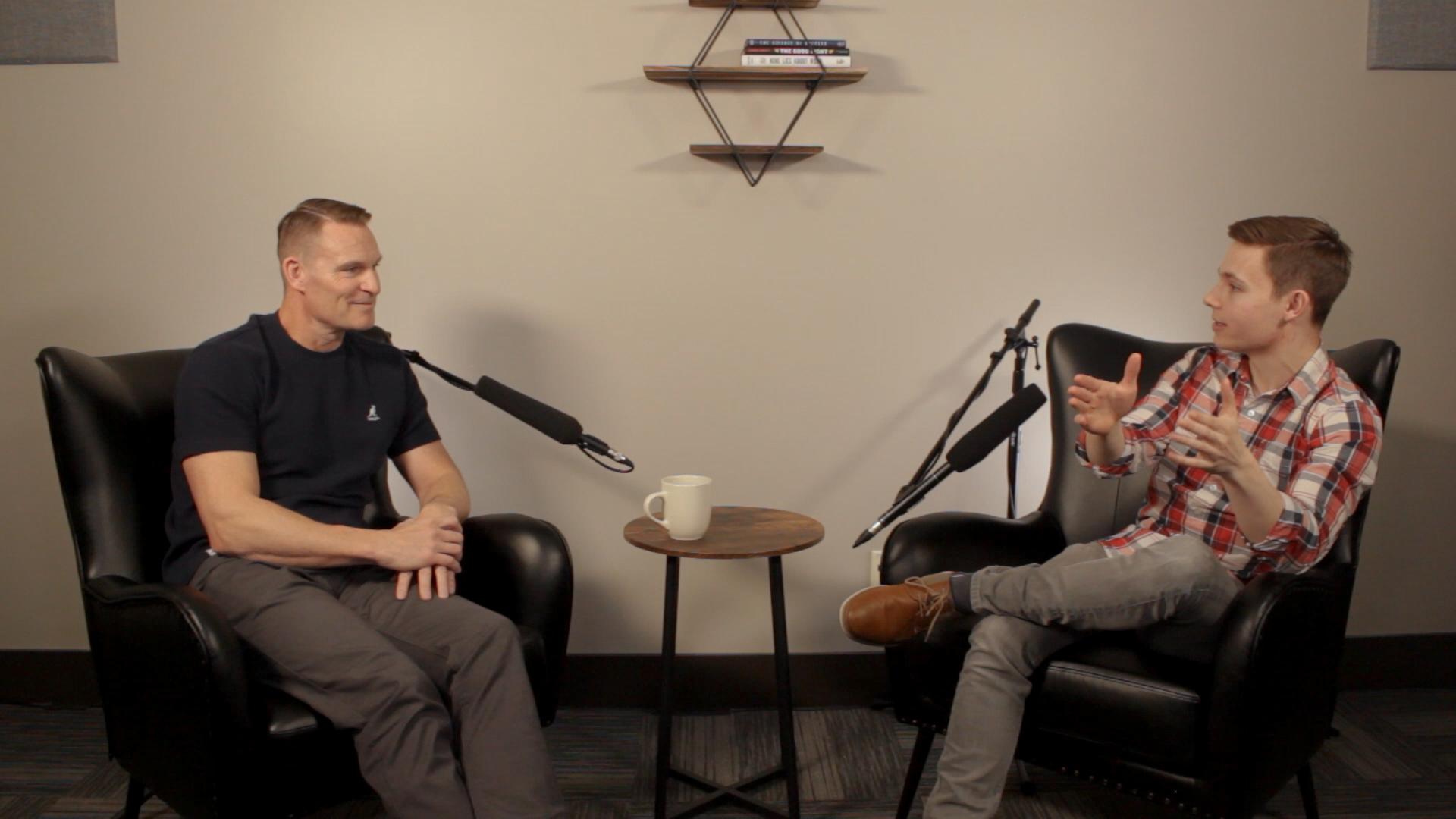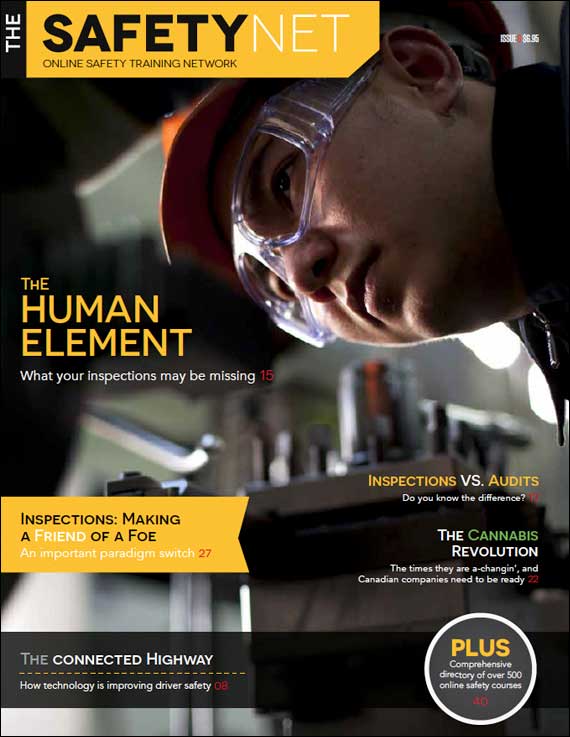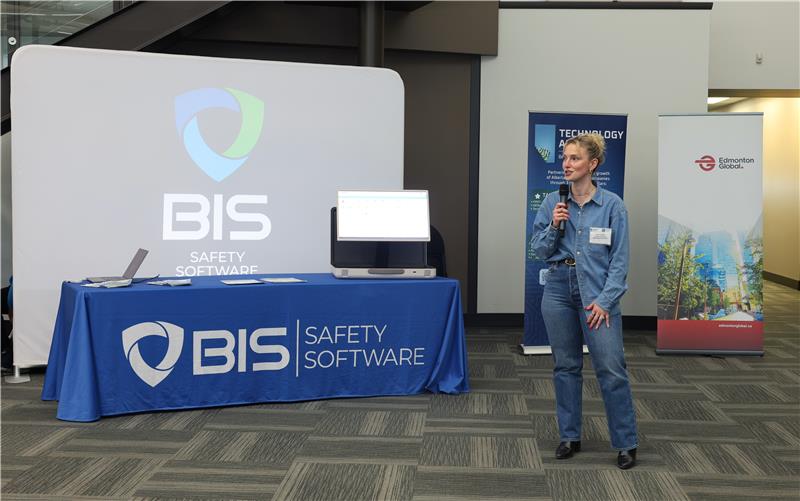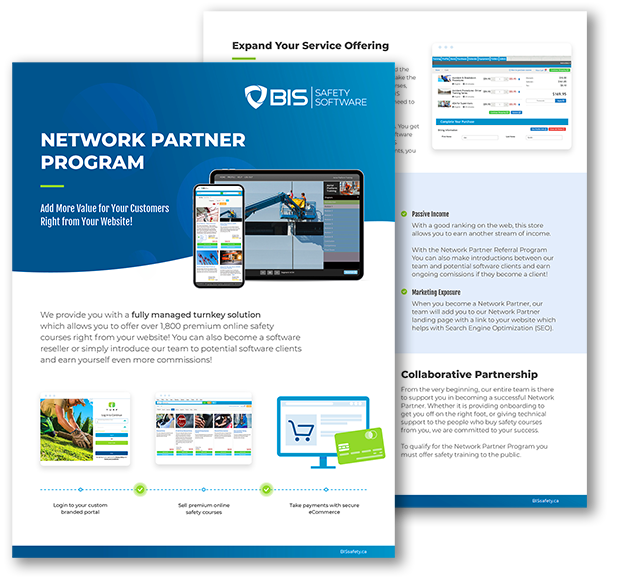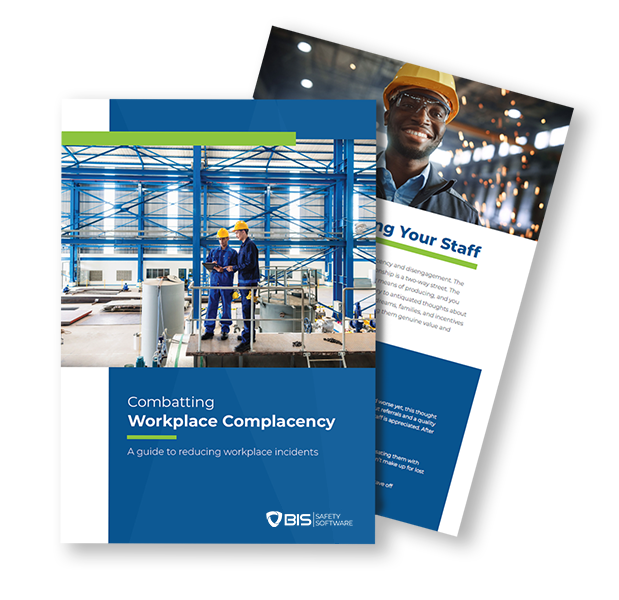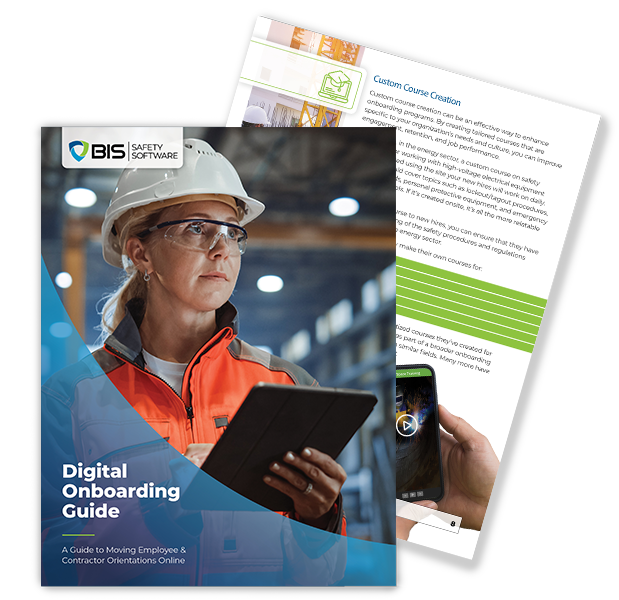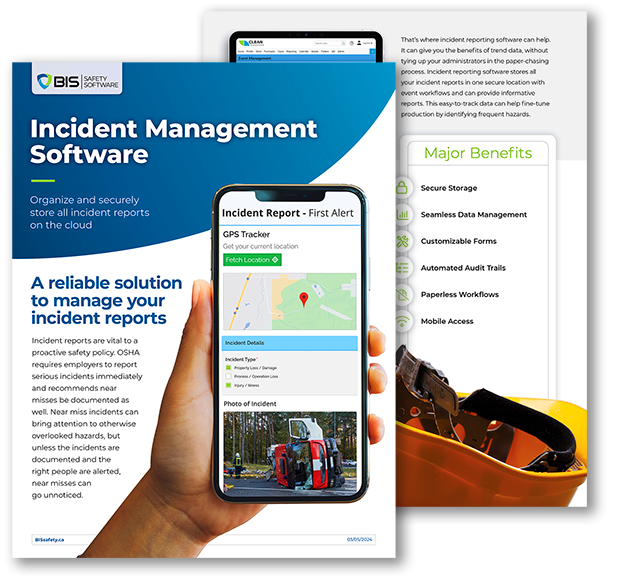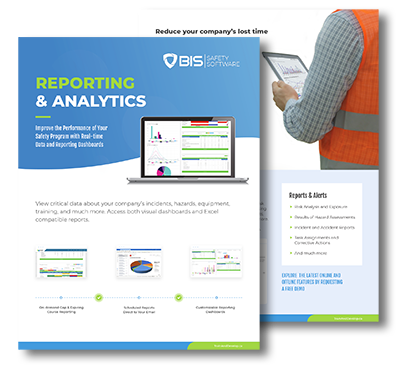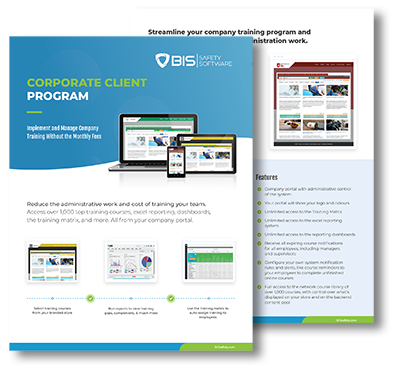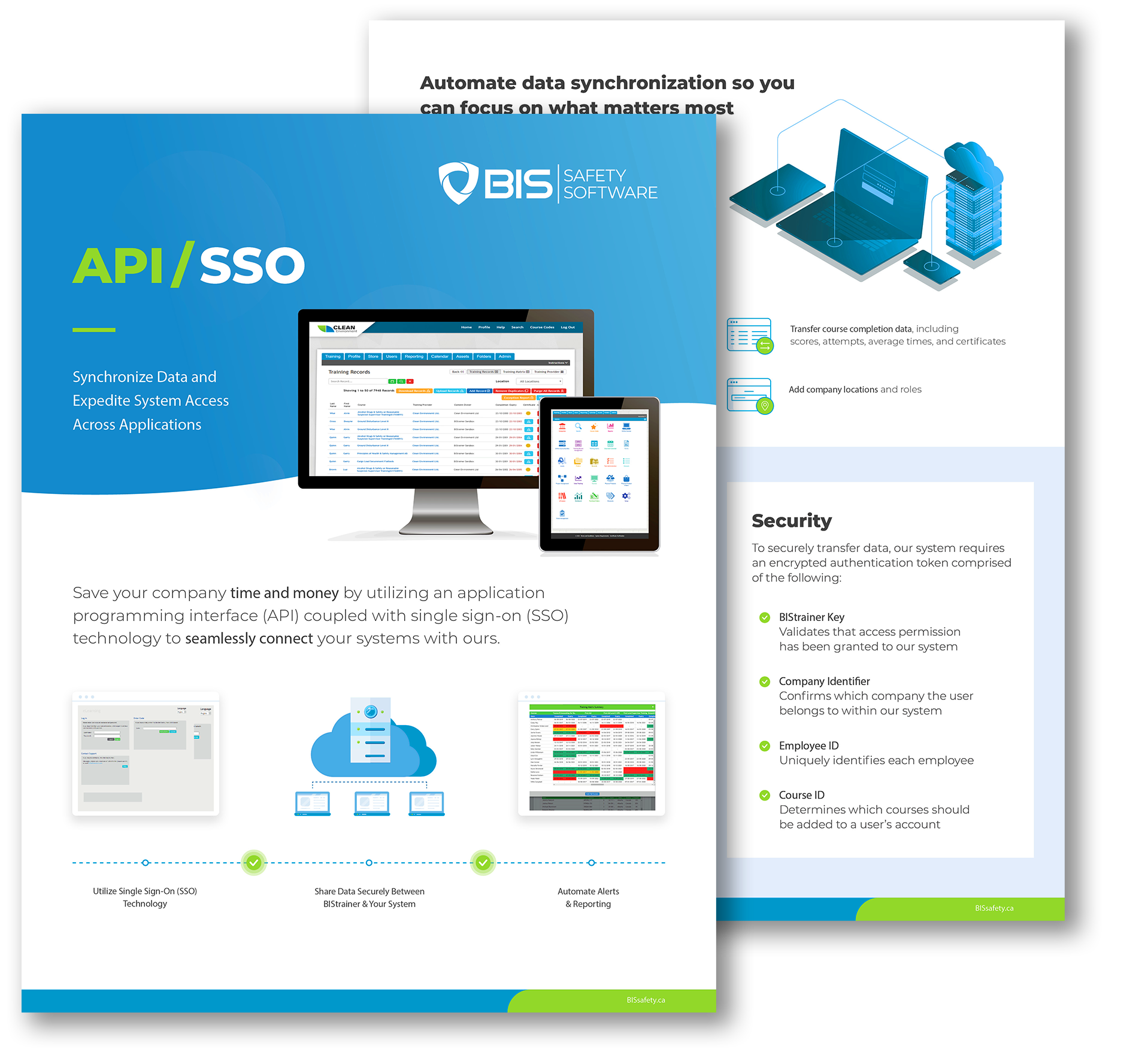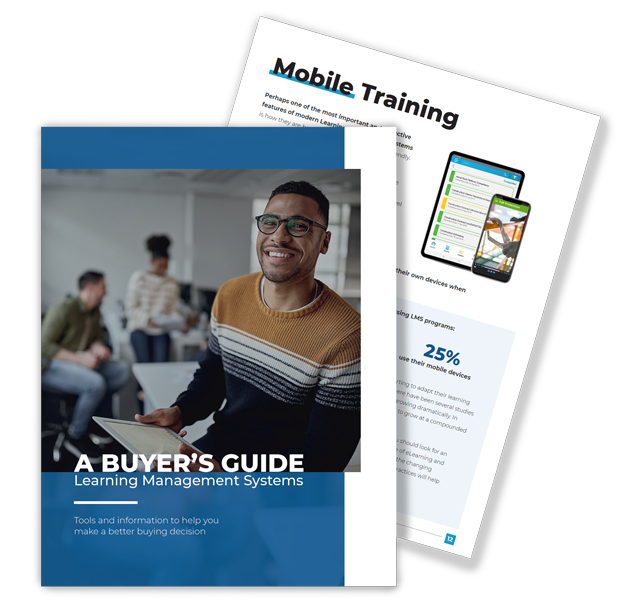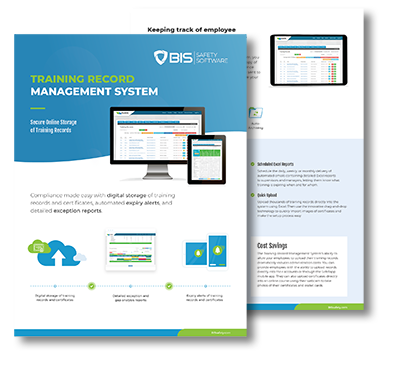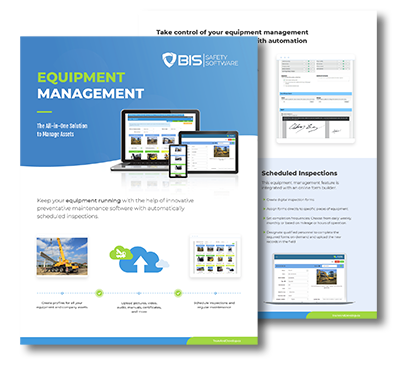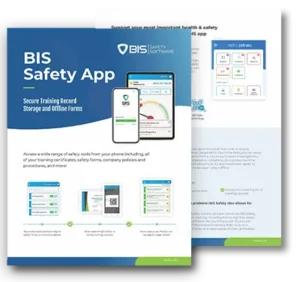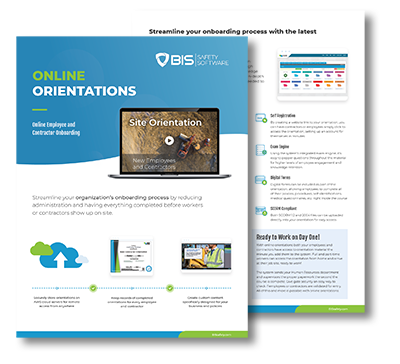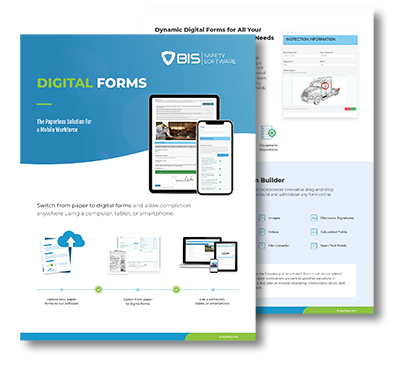From Storage to Spill Response: Applying Safe Work Practices for Anhydrous Ammonia
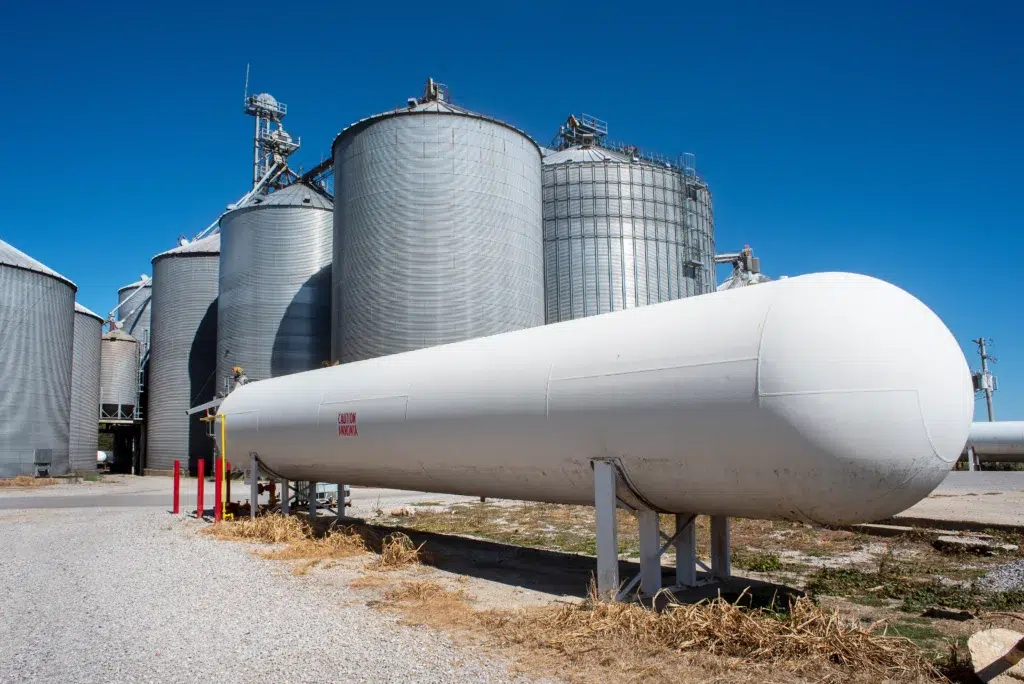
From storage conditions to emergency response, safe work practices around anhydrous ammonia protect workers from invisible but powerful hazards. Learn how awareness, training, and proper procedures keep workplaces secure.
Personal Protective Equipment: The Front Line of Safety in Any Workplace

PPE is the last line of defense against workplace hazards—from hard hats to respirators. To be effective, it must be worn correctly and backed by a strong safety culture.
The Most Overlooked PPE That Could Save Your Life
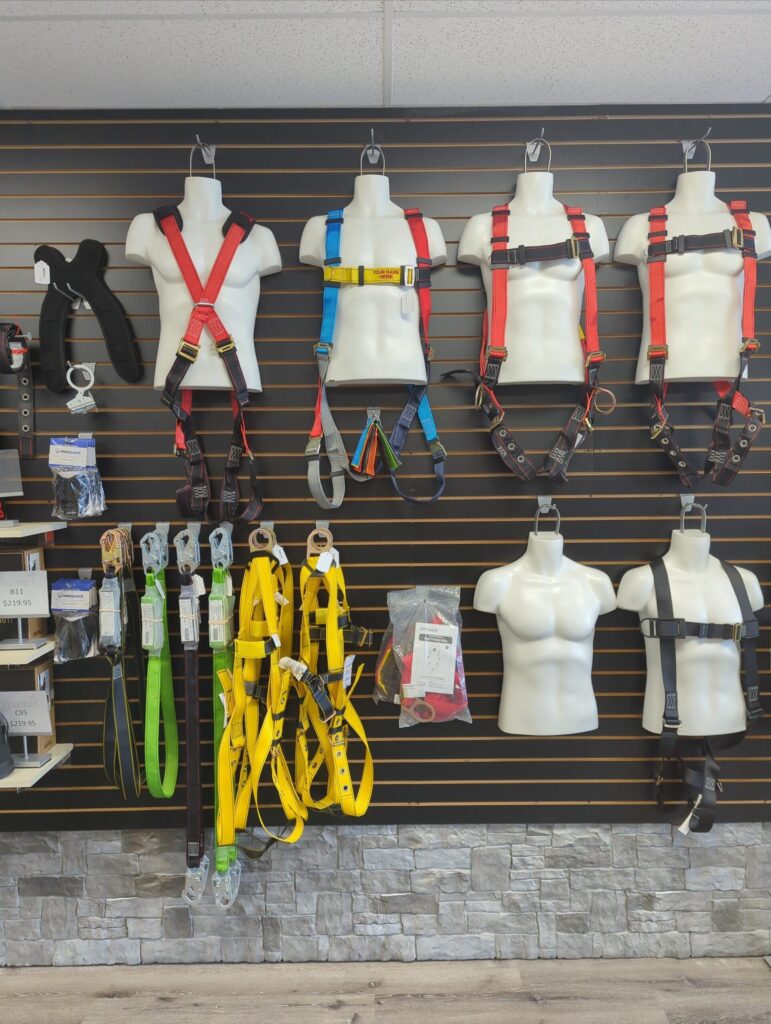
Too many workers overlook critical PPE like earplugs, respirators, and gloves, risking serious injury or death, Learn why proper gear use matters, Discover real quotes from safety professionals and workers, Understand how discomfort is no excuse for skipping protection, Get actionable advice for choosing and using PPE correctly, From fall protection to goggles—see what gear gets ignored and why.
The Dangers You Can’t See

Home Blog The Dangers You Can’t See The hidden workplace hazards you need to know about. By DanAdminCAD Facebook LinkedIn Some workplace dangers are obvious. Heavy machinery, heights, electrical wires, everyone knows to be cautious around them. But the hazards you don’t see? Those can be just as deadly. Invisible risks lurk in every job site, creeping up unnoticed until it’s too late. If you’re not paying attention, they can take you down before you even realize they’re there. The Hidden Threats You Need to Know Toxic Air – Dust, fumes, and invisible gases don’t just make breathing harder, they can silently destroy your lungs. Carbon monoxide, silica dust, and chemical vapors can be odorless and lethal. If ventilation isn’t enough, wear a respirator. Your lungs don’t get a second chance. Hearing Loss – You won’t notice it at first. A little ringing after a shift, some muffled sounds. But long-term exposure to loud environments can cause irreversible hearing damage. The worst part? You won’t even realize it’s happening until you’re struggling to hear conversations. Protect your ears before the damage is done. Fatigue – Lack of sleep is just as dangerous as working drunk. Slower reflexes, poor decision-making, and zoning out on the job can turn an ordinary task into a deadly mistake. If you’re exhausted, you’re a hazard, to yourself and everyone around you. Repetitive Motion Injuries – Small, repeated movements might not seem dangerous, but over time, they wear your body down. Poor lifting techniques, bad posture, and repetitive strain add up to chronic pain, lost workdays, and surgeries. Adjust your workspace. Take breaks. Don’t ignore the aches. Psychological Hazards – Stress, anxiety, and burnout don’t just affect your mood, they impact your ability to work safely. Distracted, overwhelmed workers are more likely to make dangerous mistakes. Mental health matters just as much as physical safety. Why These Dangers Are So Easy to Ignore Unlike a fall or a fire, these hazards don’t create instant chaos. They creep in quietly. They don’t feel urgent, until the damage is done. That’s what makes them so dangerous. No one feels their lungs getting weaker until years of exposure catch up. No one notices their hearing going until the damage is irreversible. No one thinks they’re too tired to work safely, until they make a deadly mistake. How to Protect Yourself from What You Can’t See Recognize the Risk – Just because you can’t see it doesn’t mean it’s not there. Stay aware of hidden dangers. Use the Right Gear – PPE isn’t just for obvious risks. Respirators, hearing protection, and ergonomic supports make all the difference. Take Breaks – Fatigue and repetitive strain don’t announce themselves. Pay attention to your body before it forces you to stop. Report Issues – Poor air quality, excessive noise, unrealistic workloads, if something feels wrong, speak up. Waiting could cost you your health. Make Safety a Habit – Don’t wait for symptoms. Preventative action is the only way to avoid slow-building hazards. Out of Sight, But Not Out of Mind The most dangerous threats are the ones you ignore. Just because you can’t see them doesn’t mean they aren’t hurting you. Protect yourself before the damage is done. Stay sharp. Stay safe. Sure, the biggest hazards can often sneak up on you, but a vigilant worker is a safe worker. Follow us! Stay up-to-date with the latest spotlight articles, podcasts, the SafetyNET Magazine, or our book on Leadership for Safety Excellence. All updates will be shared on our social channels, click below to follow us. Facebook Linkedin Related Articles All Posts #EmergencyPreparedness 2025 safety trends 360 Immersive 360immersive 6S Safety accident prevention accidental careers adjustable workstations adult education AI automation AI implementation AI in business AI in operations AI in Safety AI podcast AI strategy AI transformation Alberta safety courses Allan James Moore artificial intelligence asking for help audit findings audit readiness Audit Reporting automation in safety automation strategy avoidable injuries awareness Aztec Safety back strain BambooHR integration behavior-based safety Behavioral Safety behavioural safety biometric sensors BIS Podcast BIS Safety Podcasts BIS Safety Software BIS Safety Spotlight black holes Blame Culture BP Texas City Explosion Brave Leadership Brett Burkard burnout business automation Canadian OHS Canadian safety Canadian safety history Canadian safety standards carbon monoxide Carolynne Heron CCOHS chemical chemical vapors chronic injuries chronic pain cloud-based safety tools Coming Soon community safety programs Competency in Safety complacency in safety Compliance compliance courses Compliance In Canada compliance issues Compliance management Compliance Reporting compliance tools compliance tracking compliance training compliance vs protection Construction advocacy Construction education Construction industry construction safety construction safety training continuous improvement continuous safety improvement corporate culture corporate training corrective actions crane CSA standards Customer Spotlight Customer Spotlight Kevin Swinden Global Hazmat Safety Culture Hazmat Management Dangerous Goods Competency in Safety Workplace Risk Mitigation BIS Training Clients Canadian EHS customized training daily trip inspection Damage Prevention Dangerous Goods dangerous goods classification Danny Sellers data-driven safety Decision Analysis defect management defect tracking defensive driving DEI in onboarding digital compliance digital forms Digital Hazard Reporting Digital Onboarding digital safety Digital Safety Audits Digital safety systems digital safety tools digital safety transformation Digital Training Tools digital transformation DMS features document control document management system Dr. Joanna Pagonis Dr. Tom Krause driver file management driver training driving instructor program DTRMS e-learning e-learning tools eadership in safety early intervention education technology EHS EHS Adoption EHS Compliance EHS digital solutions EHS Inspections EHS Onboarding EHS software EHS tools Einstein electrical safety Emergency Action Plan emergency preparedness emergency response emergency supplies emotional training employee behavior employee engagement employee health Employee onboarding Employee Readiness employee safety employee training Energy Isolation ergonomic consulting ergonomic design ergonomic risks ergonomics Evacuation Procedures evidence collection EWI Works exoskeleton exoskeletons failure analysis fall protection fast onboarding field experience field level hazard assessments field safety field safety services Field Safety Technology Field-Friendly Software Fire Drills fire prevention Fire Safety Training first aid kit first week on the job first workplace injury fleet management fleet safety FLHA
The PPE Excuse

Home Blog The PPE Excuse Why Workers Skip It and How to Change That By RDadiz Facebook LinkedIn PPE saves lives, but too many workers skip it. Hard hats, gloves, and safety glasses get ignored, forgotten, or dismissed. The excuses are endless: “It’s uncomfortable.” “It slows me down.” “I’ve never needed it before.” But PPE only works if you wear it. A few seconds of hassle isn’t worth a lifetime of injury. Why Workers Skip PPE Workers give plenty of reasons for not wearing PPE, but none of them justify the risk. Understanding these excuses is the first step in fixing the problem. Too Uncomfortable: If PPE is hot, tight, or bulky, workers ditch it. Uncomfortable gear leads to improper use or outright refusal. False Security: “Nothing bad has happened yet” isn’t a safety plan. Just because an accident hasn’t happened doesn’t mean it won’t. Rushing the Job: Some think skipping PPE saves time, but accidents steal far more. A quick shortcut today could lead to months, or even a lifetime, of recovery. Peer Pressure: If others ignore PPE, workers follow suit. Nobody wants to be the only one following the rules while everyone else cuts corners. Weak Enforcement: If leaders don’t enforce PPE, workers won’t take it seriously. A rule that isn’t reinforced might as well not exist. The Real Cost of Skipping PPE You don’t need PPE, until you do. One missed moment can mean a lifetime of damage. PPE isn’t about inconvenience, it’s about survival. Eye injuries: Flying debris, sparks, and chemicals can cause blindness in seconds. Safety glasses aren’t optional; they’re necessary protection. Hearing loss: Loud environments destroy hearing. Once it’s gone, it’s gone. Many workers who skip ear protection wish they hadn’t, when it’s too late. Head trauma: One hit to the head without a helmet can be fatal. A single moment of neglect can lead to a life-altering injury. Burns and chemical exposure: Gloves and protective gear prevent lasting scars, or worse. Skin doesn’t grow back the same after severe burns. Amputations : Machines don’t care about mistakes. Hands, fingers, and limbs can be lost in an instant. PPE can be the last line of defense between a worker and disaster. How to Fix the PPE Problem Fixing PPE compliance isn’t about forcing workers into gear they hate. It’s about creating a culture where PPE is second nature, not an afterthought. Workers should have PPE that fits well and feels comfortable. No one should choose between safety and comfort. PPE should be easy to grab and always stocked in plain sight so workers don’t have to search for it. Enforcing PPE rules is essential. There should be no exceptions to a “no PPE, no work” policy. Workers need to understand why PPE matters, and real injury stories can drive the message home. A strong PPE culture means workers look out for each other and fix unsafe habits as they happen. Signs and posters keep safety fresh in workers’ minds. Calling out those who follow the rules builds better habits. Training should be ongoing, not just a one time event, and leadership must set the example. If supervisors don’t wear PPE, workers won’t either. Final Thought: No Excuses, Just Safety Skipping PPE isn’t tough, it’s reckless. No one is invincible. No job is worth blindness, burns, or lost limbs. PPE exists because real dangers exist. Wearing it isn’t just about following rules, it’s about survival. Make the right choice. Wear the gear. Stay safe. Follow us! Stay up-to-date with the latest spotlight articles, podcasts, the SafetyNET Magazine, or our book on Leadership for Safety Excellence. All updates will be shared on our social channels, click below to follow us. Facebook Linkedin Related Articles All Posts #EmergencyPreparedness 2025 safety trends 360 Immersive 360immersive 6S Safety accident prevention accidental careers adjustable workstations adult education AI automation AI implementation AI in business AI in operations AI in Safety AI podcast AI strategy AI transformation Alberta safety courses Allan James Moore artificial intelligence asking for help audit findings audit readiness Audit Reporting automation in safety automation strategy avoidable injuries awareness Aztec Safety back strain BambooHR integration behavior-based safety Behavioral Safety behavioural safety biometric sensors BIS Podcast BIS Safety Podcasts BIS Safety Software BIS Safety Spotlight black holes Blame Culture BP Texas City Explosion Brave Leadership Brett Burkard burnout business automation Canadian OHS Canadian safety Canadian safety history Canadian safety standards carbon monoxide Carolynne Heron CCOHS chemical chemical vapors chronic injuries chronic pain cloud-based safety tools Coming Soon community safety programs Competency in Safety complacency in safety Compliance compliance courses Compliance In Canada compliance issues Compliance management Compliance Reporting compliance tools compliance tracking compliance training compliance vs protection Construction advocacy Construction education Construction industry construction safety construction safety training continuous improvement continuous safety improvement corporate culture corporate training corrective actions crane CSA standards Customer Spotlight Customer Spotlight Kevin Swinden Global Hazmat Safety Culture Hazmat Management Dangerous Goods Competency in Safety Workplace Risk Mitigation BIS Training Clients Canadian EHS customized training daily trip inspection Damage Prevention Dangerous Goods dangerous goods classification Danny Sellers data-driven safety Decision Analysis defect management defect tracking defensive driving DEI in onboarding digital compliance digital forms Digital Hazard Reporting Digital Onboarding digital safety Digital Safety Audits Digital safety systems digital safety tools digital safety transformation Digital Training Tools digital transformation DMS features document control document management system Dr. Joanna Pagonis Dr. Tom Krause driver file management driver training driving instructor program DTRMS e-learning e-learning tools eadership in safety early intervention education technology EHS EHS Adoption EHS Compliance EHS digital solutions EHS Inspections EHS Onboarding EHS software EHS tools Einstein electrical safety Emergency Action Plan emergency preparedness emergency response emergency supplies emotional training employee behavior employee engagement employee health Employee onboarding Employee Readiness employee safety employee training Energy Isolation ergonomic consulting ergonomic design ergonomic risks ergonomics Evacuation Procedures evidence collection EWI Works exoskeleton exoskeletons failure analysis fall protection fast onboarding field experience field level hazard assessments field safety field safety assessments field safety services Field Safety Technology
Pipeline Construction Safety Training
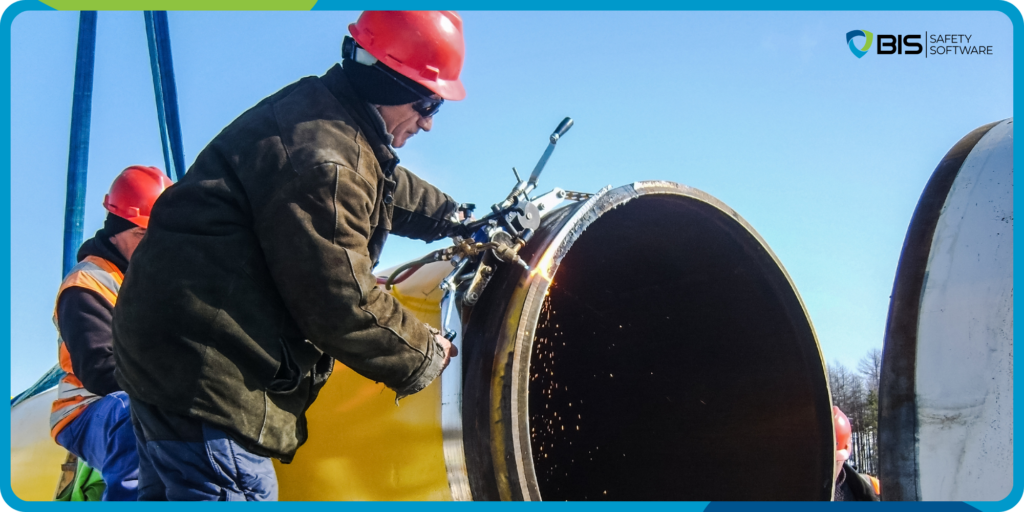
Home Blog Pipeline Construction Safety Training Essential Knowledge for Workers Enroll today! By RDadiz Facebook LinkedIn Pipeline construction plays a vital role in transporting oil and natural gas efficiently and safely. However, building and maintaining these pipelines comes with significant hazards that can put workers, the environment, and the surrounding communities at risk. Proper training ensures that every worker understands the best safety practices, potential hazards, and industry regulations. The Pipeline Construction Safety Training (PCST) course provides comprehensive knowledge on hazard identification, risk mitigation, and safe construction techniques. This training ensures workers can perform their jobs safely and effectively. Upon completion, participants receive a QR Code-enabled certificate for quick verification of their credentials. Why Pipeline Construction Safety Training Matters Pipeline construction involves heavy machinery, hazardous materials, and complex processes. Without the proper training, workers face risks such as falls, equipment-related injuries, chemical exposure, and fire hazards. A well-trained workforce helps to: ✔ Prevent accidents and injuries on-site ✔ Ensure compliance with safety regulations ✔ Reduce costly delays caused by safety violations ✔ Protect the environment from contamination risks ✔ Improve communication and teamwork among workers What’s Covered in Pipeline Construction Safety Training? 1. Understanding Pipeline Construction Processes ✔ Overview of pipeline construction steps ✔ Surveying, trenching, and laying pipelines ✔ Welding, coating, and non-destructive testing ✔ Backfilling, pressure testing, and reclamation 2. Recognizing Common Hazards ✔ Working around heavy equipment and vehicles ✔ Uneven terrain and trench-related risks ✔ Exposure to hazardous chemicals and gases ✔ Lockout/Tagout (LOTO) procedures for hazardous energy ✔ Overhead power line safety 3. Fire Prevention and Emergency Preparedness ✔ Fire hazard identification and prevention strategies ✔ Fire extinguisher types and proper use (PASS method) ✔ Emergency response procedures for spills and incidents ✔ Safe handling of flammable materials 4. Personal Protective Equipment (PPE) and Safe Practices ✔ Selecting and using the right PPE for pipeline work ✔ Importance of eye, hand, foot, and respiratory protection ✔ Best practices for avoiding workplace injuries ✔ Safety protocols for working in remote locations Get Certified Today! Pipeline construction requires specialized knowledge and adherence to strict safety standards. The Pipeline Construction Safety Training (PCST) course provides workers with the essential skills to work safely, prevent accidents, and ensure compliance with industry regulations. Participants will receive a QR Code-enabled certificate for verification. Enhance your safety knowledge, [Enroll in Pipeline Construction Safety Training Today]! Follow us! Stay up-to-date with the latest spotlight articles, podcasts, the SafetyNET Magazine, or our book on Leadership for Safety Excellence. All updates will be shared on our social channels, click below to follow us. Facebook Linkedin Related Articles All Posts #EmergencyPreparedness 2025 safety trends 360 Immersive 360immersive 6S Safety accident prevention accidental careers adjustable workstations adult education AI automation AI implementation AI in business AI in operations AI in Safety AI podcast AI strategy AI transformation Alberta safety courses Allan James Moore artificial intelligence asking for help audit findings audit readiness Audit Reporting automation in safety automation strategy avoidable injuries awareness Aztec Safety back strain BambooHR integration behavior-based safety Behavioral Safety behavioural safety biometric sensors BIS Podcast BIS Safety Podcasts BIS Safety Software BIS Safety Spotlight black holes Blame Culture BP Texas City Explosion Brave Leadership Brett Burkard burnout business automation Canadian OHS Canadian safety Canadian safety history Canadian safety standards carbon monoxide Carolynne Heron CCOHS chemical chemical vapors chronic injuries chronic pain cloud-based safety tools Coming Soon community safety programs Competency in Safety complacency in safety Compliance compliance courses Compliance In Canada compliance issues Compliance management Compliance Reporting compliance software compliance tools compliance tracking compliance training compliance vs protection Construction advocacy Construction education Construction industry construction safety construction safety training continuous improvement continuous safety improvement corporate culture corporate training corrective actions crane CSA standards Customer Spotlight Customer Spotlight Kevin Swinden Global Hazmat Safety Culture Hazmat Management Dangerous Goods Competency in Safety Workplace Risk Mitigation BIS Training Clients Canadian EHS customized training daily trip inspection Damage Prevention Dangerous Goods dangerous goods classification Danny Sellers data-driven safety Decision Analysis defect management defect tracking defensive driving DEI in onboarding digital compliance digital forms Digital Hazard Reporting Digital Onboarding digital safety Digital Safety Audits Digital safety systems digital safety tools digital safety transformation Digital Training Tools digital transformation DMS features document control document management system Dr. Joanna Pagonis Dr. Tom Krause driver file management driver training driving instructor program DTRMS e-learning e-learning tools eadership in safety early intervention education technology EHS EHS Adoption EHS Compliance EHS digital solutions EHS Inspections EHS Onboarding EHS software EHS systems EHS tools Einstein electrical safety Emergency Action Plan emergency preparedness emergency response emergency supplies emotional training employee behavior employee engagement employee health Employee onboarding Employee Readiness employee safety employee training Energy Isolation ergonomic consulting ergonomic design ergonomic risks ergonomics Evacuation Procedures evidence collection EWI Works exoskeleton exoskeletons failure analysis fall protection fast onboarding field experience field level hazard assessments field safety field safety assessments field safety services Field Safety Technology Field-Friendly Software Fire Drills fire prevention Fire Safety Training first aid kit first week on the job first workplace injury fleet management fleet safety FLHA engagement FLHA Integration FLHA software FMEA freight Frontline Engagement frontline safety future of work Global Hazmat global onboarding gravitational waves hand injuries handling hazardous materials hands-on training hazard analysis hazard assessment compliance Hazard Awareness hazard communication Hazard Identification hazard prevention hazard recognition Hazardous Energy Control Hazmat Management Health & Safety Podcast health and safety hearing loss prevention hearing protection heavy equipment safety hidden workplace hazards high voltage systems HR automation HR software human factors human in the loop Human Performance human vs machine human-centered design human-centered safety humor in safety ICBC certification identification immersive learning Imposter Syndrome incident data incident investigation incident prevention incident reporting industrial AI Industrial Hygiene industrial safety influence vs control Infrastructure Risk injury consequences injury prevention injury prevention tips injury recovery injury reporting injury response injury response plan instructor development internal audits international workforce invisible dangers ISO standards Jeff Mulligan Jennifer Lastra job site accountability job site hazards job site risks job site
Safety Myths
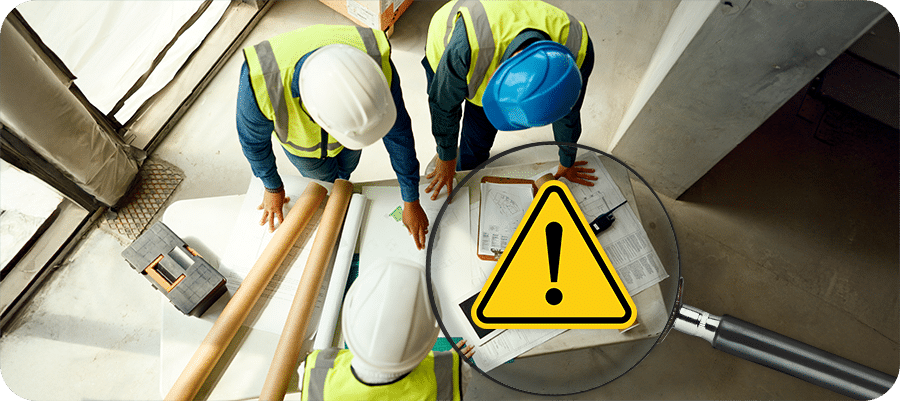
Home Blog Safety Myths And Which Ones Need to Die! Does your workplace suffer from ‘fakelore’? By DanAdminCAD Facebook LinkedIn Some workplace safety “truths” have been passed down for years, but that doesn’t make them right. In fact, some of the most common safety beliefs are flat-out dangerous. It’s time to call them out before they get someone hurt. Here are some of the biggest myths that need to be put to bed: 1. “We’ve Always Done It This Way, and It’s Been Fine” Why it’s dangerous: Just because it worked before doesn’t mean it’s safe now. The fix: Regularly review procedures and update them based on new technology and best practices. Just because something hasn’t caused an accident yet doesn’t mean it won’t. Luck is not a safety strategy. Every shortcut taken without consequence is just stacking the odds against you. The right way to do something is the safe way, not just the way it’s always been done. This myth is especially dangerous because it resists change. New technology, updated regulations, and evolving best practices exist for a reason. Sticking to outdated methods means ignoring safer, more efficient ways to work. It’s only a matter of time before that “tried and true” approach fails in a catastrophic way. “People with [differing] attitudes or inexperience think they can cut corners, but it will catch up with them eventually. It’s just like running stop signs, you might get away with it for a while, but sooner or later, disaster strikes.” Robin Postnikoff 2. “More PPE Means More Safety” Why it’s dangerous: Too much PPE can reduce mobility and create new hazards. The fix: Use the hierarchy of controls, eliminate hazards first, then rely on PPE as a last line of defense. PPE is essential, but it’s not a magic shield. Wearing thick gloves while handling tiny components can reduce grip and increase risk. Heavy gear in hot conditions can lead to heat exhaustion. Safety starts with eliminating hazards, not just piling on more protective equipment. The key is the hierarchy of controls. Remove the hazard first. Substitute safer alternatives. Install engineering or administrative controls before relying solely on PPE. Workers need the right protection, not just more protection. “Sometimes, extreme PPE requirements actually cause more problems. We had sites where tying off at two steps was mandatory, but workers were tripping over their harness cords. It wasn’t reasonable, and people got hurt because of it.” Brett Burkard 3. “A Quick Task Doesn’t Need Full Safety Precautions” Why it’s dangerous: Accidents happen in seconds, especially when rushing. The fix: Treat every task, no matter how small, as an opportunity to follow proper safety procedures. The worst accidents happen when people skip safety steps “just for a second.” It only takes a moment for a fall, a fire, or an amputation to happen. No job is too small for safety. Related read: Do you own a business in the insurance industry? Check out how Artificial Intelligence is transforming the insurance industry. “Every rule has been written in blood. People don’t take things seriously until someone gets hurt or a company gets sued. That’s why we drill safety into training, it has to stick before something bad happens.” Robin Postnikoff 4. “If It’s Not an Injury, It’s Not a Big Deal” Why it’s dangerous: Near misses are warnings that something is wrong. The fix: Investigate and correct all near misses before they turn into serious accidents. Near misses are flashing warning signs. Ignoring them guarantees that next time, someone will get hurt. Treat close calls like actual incidents, investigate, correct, and learn from them. In industries like construction and manufacturing, near misses are often precursors to severe accidents. A worker who trips but doesn’t fall today might break a leg tomorrow. A machine that jams without consequence today might lead to an amputation next week. Reporting and addressing near misses prevent tragedies. 5. “Good Workers Don’t Need Safety Training” Why it’s dangerous: Experience can lead to overconfidence and complacency. The fix: Make regular safety training mandatory for all employees, no matter their experience level. Experience doesn’t make anyone invincible. In fact, veteran workers are often the ones who get complacent. Training isn’t just for rookies, it’s for everyone, all the time. “I don’t care if you have a master’s degree in safety. If you don’t have the experience, the network, and the mindset to keep learning, you’re not going to be a good safety person. Training is never just a ‘one and done.” Kevin Swinden 6. “Slower Work Is Safer Work” Why it’s dangerous: Moving too slowly can cause inefficiencies and increase risk. The fix: Focus on smart work, trained, controlled, and precise, rather than just slow work. Rushing is dangerous, but moving at a crawl isn’t the answer either. Safety is about working smart, not just slow. Proper training and good procedures allow workers to be both safe and efficient. Think about high-risk jobs like firefighting or emergency response. Speed is necessary, but it’s trained, controlled, and precise. The same applies to workplaces. Efficiency and safety go hand in hand when workers follow procedures correctly. 7. “Only High-Risk Jobs Require Safety” Why it’s dangerous: Every workplace has risks, even offices. The fix: Promote workplace-wide safety initiatives. That includes ergonomics, mental health, and general hazard awareness. Office workers don’t wear hard hats, but that doesn’t mean they’re risk-free. Ergonomics, air quality, mental health, and electrical hazards all pose serious threats in lower-risk jobs. Safety applies everywhere. “Workplace safety is expanding beyond just physical hazards. We’re seeing a shift in how mental well-being is incorporated into safety culture, and that’s a game-changer.” Lisa Rantucci 8. “Accidents Just Happen” Why it’s dangerous: Almost all workplace accidents are preventable. The fix: Build a proactive safety culture where workers feel responsible for identifying and addressing hazards. No, they don’t. Almost every workplace accident is preventable. Ignoring risks, skipping procedures, and relying on luck is a choice, and it’s a bad one. “I’ve seen companies turn their
Would You Bet Your Paycheck on Safety?

Home Blog Would You Bet Your Paycheck on Safety? That Need to Die By RDadiz Facebook LinkedIn Imagine this: At the end of every shift, you had to bet your entire paycheck that nobody on your crew got hurt. Would you do anything differently? Would you double-check your PPE? Would you remind a co-worker to use a harness? Would you take that extra second to secure a load or test a machine lockout? The truth is, whether you realize it or not, you are betting on safety every day. The stakes aren’t just money, they’re your health, your reputation, and your future. One bad decision, one shortcut, one ignored hazard, and you could lose everything. Safety is More Than a Rule, It’s a Wager Most people wouldn’t gamble their paycheck on pure luck. But every time someone skips a step, assumes a risk, or rushes a job, they’re rolling the dice. Sometimes they win, nothing happens. Other times? That bet costs them weeks of lost wages, medical bills, or a permanent injury. Think about it: A mechanic skips wearing gloves because “it’s just a quick fix.” That quick fix leads to stitches and time off work. A forklift operator speeds up to finish early. One wrong turn leads to a collision, and unemployment. A roofer skips fall protection “just for a second.” That second changes their life forever. Key Takeaways Lorem Ipsum is simply dummy text of the printing and typesetting industry. Lorem Ipsum has been the industry’s standard dummy text ever since the 1500s, when an unknown printer took a galley of type and scrambled it to make a type specimen book. It has survived not only five centuries, but also Lorem Ipsum is simply dummy text of the printing and typesetting industry. Lorem Ipsum has been the industry’s standard dummy text ever since the 1500s, when an unknown printer took a galley of type and scrambled it to make a type specimen book. It has survived not only five centuries, but also Lorem Ipsum is simply dummy text of the printing and typesetting industry. Lorem Ipsum has been the industry’s standard dummy text ever since the 1500s, when an unknown printer took a galley of type and scrambled it to make a type specimen book. It has survived not only five centuries, but also Lorem Ipsum is simply dummy text of the printing and typesetting industry. Lorem Ipsum has been the industry’s standard dummy text ever since the 1500s, when an unknown printer took a galley of type and scrambled it to make a type specimen book. It has survived not only five centuries, but also The House Always Wins Casinos are designed so that, over time, the house always wins. Unsafe work habits work the same way. Maybe you’ve skipped safety steps before and nothing happened. Maybe you’ve seen others take risks and walk away fine. That’s like winning a few hands in a row, it feels good, but the odds will catch up eventually. Complacency is the biggest con of all. The more times a worker gets away with a risk, the more confident they become in their luck. But luck runs out. And when it does, the price is steep. Related read: Do you own a business in the insurance industry? Check out how Artificial Intelligence is transforming the insurance industry. How to Play It Safe (and Win Every Time) 1. Be Smart Act like your paycheck depends on it. Because in many ways, it does. 2. Think Long-Term A shortcut might save five minutes, but an injury could cost five months. 3. Hold Each Other Accountable Safety isn’t a solo game. Watch out for your crew. Remind them that a mistake could cost them more than just pride. 4. Stay Sharp Keep safety top of mind. Refresh your training. Don’t let routine make you careless. 5. Call Out the Risks If something feels unsafe, stop. Speak up. Fix it before it becomes an accident. Make the Right Bet If you had to bet your paycheck on safety, you’d work smarter. You’d pay attention. You’d make sure nobody around you was cutting corners. You’d take safety seriously, because you’d have too much to lose. The reality? You already do. Every shift, every task, every decision is a bet. Make sure it’s one you can afford to win. Stay sharp. Stay safe. Because in this game, there’s no cashing out. Follow us! Stay up-to-date with the latest spotlight articles, podcasts, the SafetyNET Magazine, or our book on Leadership for Safety Excellence. All updates will be shared on our social channels, click below to follow us. Facebook Linkedin Related Articles All Posts #EmergencyPreparedness 2025 safety trends 360 Immersive 360immersive 6S Safety accident prevention accidental careers adjustable workstations adult education AI automation AI implementation AI in business AI in operations AI in Safety AI podcast AI strategy AI transformation Alberta safety courses Allan James Moore artificial intelligence asking for help audit findings audit readiness Audit Reporting automation in safety automation strategy avoidable injuries awareness Aztec Safety back strain BambooHR integration behavior-based safety Behavioral Safety behavioural safety biometric sensors BIS Podcast BIS Safety Podcasts BIS Safety Software BIS Safety Spotlight black holes Blame Culture BP Texas City Explosion Brave Leadership Brett Burkard burnout business automation Canadian OHS Canadian safety Canadian safety history Canadian safety standards carbon monoxide Carolynne Heron CCOHS chemical chemical vapors chronic injuries chronic pain cloud-based safety tools Coming Soon community safety programs Competency in Safety complacency in safety Compliance compliance courses Compliance In Canada compliance issues Compliance management Compliance Reporting compliance software compliance tools compliance tracking compliance training compliance vs protection Construction advocacy Construction education Construction industry construction safety construction safety training continuous improvement continuous safety improvement corporate culture corporate training corrective actions crane CSA standards Customer Spotlight Customer Spotlight Kevin Swinden Global Hazmat Safety Culture Hazmat Management Dangerous Goods Competency in Safety Workplace Risk Mitigation BIS Training Clients Canadian EHS customized training daily trip inspection Damage Prevention Dangerous Goods dangerous goods classification Danny Sellers
Shortcuts Kill
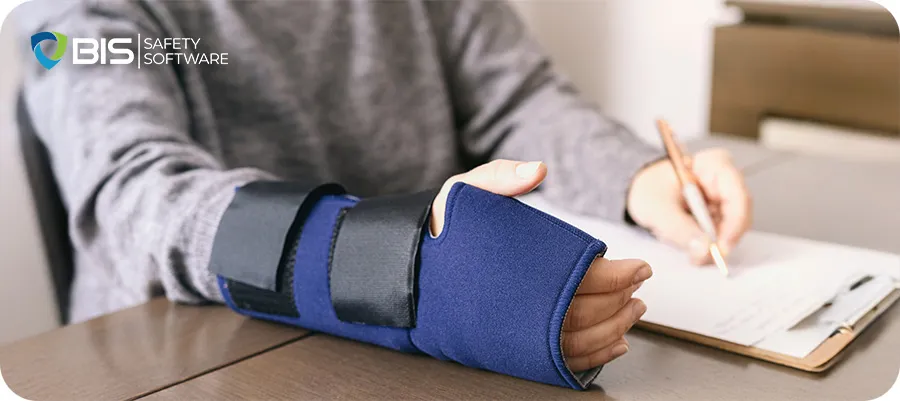
Home Blog Shortcuts Kill The Hidden Cost of Rushing Through Safety By RDadiz Facebook LinkedIn Shortcuts save time, until they don’t. A missing hard hat. A skipped lockout. A harness left unclipped. One bad decision can change everything. Workers take risks when they think nothing will go wrong. Until it does. And when it does, it’s fast. Sudden. Unforgiving. One moment of carelessness can lead to an injury, a shutdown, or a life-changing disaster. The Danger of Cutting Corners Rushing feels efficient. Deadlines press. Supervisors push for speed. But cutting corners doesn’t just shave minutes, it adds risk. Skipping safety steps turns small hazards into major injuries. The more often workers take shortcuts, the more comfortable they get with risk. They stop seeing the danger. Until it’s too late. A missed PPE check – One forgotten glove leads to a lost finger. A rushed equipment inspection – A worn cable snaps under pressure. Ignoring proper lifting technique – A split-second strain causes years of back pain. Skipping lockout/tagout – A machine restarts with someone still inside. Rushing through confined space protocols – One bad reading, and toxic gases take a life. Shortcuts threaten everyone. They cost companies millions in lost productivity, compensation claims, and lawsuits. A rushed job today can shut down a whole operation tomorrow. And when tragedy strikes, it’s not about money. It’s about lives changed forever. Families devastated. Reputations ruined. Why Workers Take Risks Pressure to Perform – Speed over safety. When deadlines loom, safety steps feel like obstacles. Overconfidence – Workers trust experience over protocol. They think they know better, until they don’t. Bad Habits – Cutting corners becomes routine. The more it happens, the more normal it seems. Lack of Accountability – If no one enforces safety, workers assume it doesn’t matter. Peer Influence – If everyone else skips steps, new workers follow suit. Fatigue and Stress – Tired workers make poor decisions. The exhausted brain values speed over caution. The Ripple Effect of One Shortcut A single shortcut spreads. A rushed inspection today leads to faulty equipment tomorrow. A minor slip-up turns into a major incident. One unsafe act signals to others that safety is flexible. It erodes the entire safety culture, bit by bit, until disaster is inevitable. Related read: Do you own a business in the insurance industry? Check out how Artificial Intelligence is transforming the insurance industry. How to Stop the Shortcut Mindset Safety isn’t a box to check. It’s a mindset. A culture. Here’s how to stop the “just this once” mentality before it turns deadly: Slow Down – Safety takes seconds. Recovery takes months. Reinforce that no deadline is worth an injury. Reinforce Training – Keep safety top-of-mind with regular refreshers. Make it stick with real-world examples. Encourage Reporting – If workers see shortcuts happening, they should speak up, without fear of punishment. Hold Everyone Accountable – From the top down, safety is non-negotiable. No exceptions. Reward Safe Behavior – Recognize workers who take the time to do things right. Reinforce that safety matters more than speed. Use Real Consequences – Don’t just warn about risks. Show examples. Videos. Stories. Accidents that could have been prevented. Supervisors Must Lead – Leaders who enforce shortcuts set a dangerous precedent. Safety starts at the top. The Bottom Line A shortcut isn’t just a time-saver. It’s a risk multiplier. One bad decision can cost a life. The safest worker isn’t the fastest, it’s the one who makes it home. Every. Single. Day. Because safety isn’t about slowing work down. It’s about making sure work never stops because of an avoidable tragedy. Follow us! Stay up-to-date with the latest spotlight articles, podcasts, the SafetyNET Magazine, or our book on Leadership for Safety Excellence. All updates will be shared on our social channels, click below to follow us. Facebook Linkedin Related Articles All Posts #EmergencyPreparedness 2025 safety trends 360 Immersive 360immersive 6S Safety accident prevention accidental careers adjustable workstations adult education AI automation AI implementation AI in business AI in operations AI in Safety AI podcast AI strategy AI transformation Alberta safety courses Allan James Moore artificial intelligence asking for help audit findings audit readiness Audit Reporting automation in safety automation strategy avoidable injuries awareness Aztec Safety back strain BambooHR integration behavior-based safety Behavioral Safety behavioural safety biometric sensors BIS Podcast BIS Safety Podcasts BIS Safety Software BIS Safety Spotlight black holes Blame Culture BP Texas City Explosion Brave Leadership Brett Burkard burnout business automation Canadian OHS Canadian safety Canadian safety history Canadian safety standards carbon monoxide Carolynne Heron CCOHS chemical chemical vapors chronic injuries chronic pain cloud-based safety tools Coming Soon community safety programs Competency in Safety complacency in safety Compliance compliance courses Compliance In Canada compliance issues Compliance management Compliance Reporting compliance software compliance tools compliance tracking compliance training compliance vs protection Construction advocacy Construction education Construction industry construction safety construction safety training continuous improvement continuous safety improvement corporate culture corporate training corrective actions crane CSA standards Customer Spotlight Customer Spotlight Kevin Swinden Global Hazmat Safety Culture Hazmat Management Dangerous Goods Competency in Safety Workplace Risk Mitigation BIS Training Clients Canadian EHS customized training daily trip inspection Damage Prevention Dangerous Goods dangerous goods classification Danny Sellers data-driven safety Decision Analysis defect management defect tracking defensive driving DEI in onboarding digital compliance digital forms Digital Hazard Reporting Digital Onboarding digital safety Digital Safety Audits Digital safety systems digital safety tools digital safety transformation Digital Training Tools digital transformation DMS features document control document management system Dr. Joanna Pagonis Dr. Tom Krause driver file management driver training driving instructor program DTRMS e-learning e-learning tools eadership in safety early intervention education technology EHS EHS Adoption EHS Compliance EHS digital solutions EHS Inspections EHS Onboarding EHS software EHS systems EHS tools Einstein electrical safety Emergency Action Plan emergency preparedness emergency response emergency supplies emotional training employee behavior employee engagement employee health Employee onboarding Employee Readiness employee safety employee training Energy Isolation ergonomic consulting ergonomic design ergonomic risks ergonomics Evacuation Procedures evidence collection EWI Works exoskeleton
The 5 Most Overlooked Workplace Hazards

Home Blog The 5 Most Overlooked Workplace Hazards And How to Fix Them By RDadiz Facebook LinkedIn Workplace safety isn’t just about hard hats and high-visibility vests. Some dangers hide in plain sight. You don’t see them until someone gets hurt. Many risks grow over time, unnoticed. A small ache turns into a disability. A moment’s distraction causes catastrophe. Here are five hazards that often slip by and how to stop them. 1. Poor Ergonomics Sitting all day seems harmless. It’s not. Bad posture and repetitive movements wreck joints and muscles. Office workers, warehouse staff, and factory crews all suffer. Over time, pain turns into lasting damage. Injuries creep in, strained wrists, stiff necks, aching backs. Productivity drops. Workers call in sick. Minor discomfort today becomes a major problem tomorrow. Fix: Adjust chairs, desks, and screens. Teach proper lifting. Offer ergonomic assessments. Small tweaks, like raising a monitor or using anti-fatigue mats, make a big difference. Encourage movement. Stretching and short breaks prevent strain. Rotate tasks to reduce repetitive stress. 2. Mental Health Strain Stress doesn’t leave bruises, but it cripples workers. Burnout and anxiety make mistakes more likely. A distracted worker is a dangerous one. Fatigue slows reflexes. Irritation sparks conflict. Low morale leads to high turnover, more sick days, and poor focus. A stressed worker is an accident waiting to happen. Fix: Foster an open culture. Let employees talk about mental health without fear. Offer support programs. Push for realistic workloads. Breaks aren’t a luxury, they’re a necessity. Flexibility and mentorship help keep teams strong. Train supervisors to spot warning signs. A quick check-in can prevent a breakdown. 3. Invisible Toxins Danger isn’t always visible. Dust, mold, and chemical fumes lurk in the air. They creep into lungs, causing long-term harm. Poor ventilation makes things worse. Workers may not realize they’re exposed until it’s too late. Headaches, dizziness, breathing problems, subtle at first, serious over time. Chronic illness follows. Fix: Test air quality often. Use respirators when needed. Maintain ventilation systems. Train workers to spot symptoms early. Better filters and safer handling reduce risks. Label chemicals clearly. Store them safely. Ensure spills get cleaned up fast. 4. Complacency Familiarity dulls caution. When tasks feel routine, workers cut corners. Safety rules become afterthoughts. One skipped step can lead to disaster. The most experienced workers can be the most at risk, they trust themselves too much. Overconfidence kills. Fix: Keep safety fresh. Hold surprise inspections. Reinforce training often. Encourage workers to call out unsafe behavior. Reward attention to detail. Keep everyone engaged and alert. Rotate duties so routines don’t become ruts. Make safety meetings interactive, not just another checkbox. 5. Improper PPE Use Safety gear only works when used right. Loose masks, missing gloves, or fogged-up goggles won’t protect anyone. Some workers resist PPE, it’s uncomfortable, inconvenient, or forgotten. Others assume they don’t need it. A single lapse is enough for injury. Fix: Train workers to use gear in the correct way. Do regular compliance checks. Make sure PPE fits well and is easy to access. Keep training short, direct, and frequent. Show real-life examples of what happens when someone ignores PPE. Make safety personal. Stay Ahead of the Risks Hidden hazards are still hazards. Spot them early. Fix them fast. A safe workplace doesn’t just happen, it takes constant effort. Safety isn’t a one-time meeting. It’s a daily commitment. Keep safety a priority. Stay sharp. Stay safe. A moment of caution saves a lifetime of regret. Follow us! Stay up-to-date with the latest spotlight articles, podcasts, the SafetyNET Magazine, or our book on Leadership for Safety Excellence. All updates will be shared on our social channels, click below to follow us. Facebook Linkedin Related Articles All Posts #EmergencyPreparedness 2025 safety trends 360 Immersive 360immersive 6S Safety accident prevention accidental careers adjustable workstations adult education AI automation AI implementation AI in business AI in operations AI in Safety AI podcast AI strategy AI transformation Alberta safety courses Allan James Moore artificial intelligence asking for help audit findings audit readiness Audit Reporting automation in safety automation strategy avoidable injuries awareness Aztec Safety back strain BambooHR integration behavior-based safety Behavioral Safety behavioural safety biometric sensors BIS Podcast BIS Safety Podcasts BIS Safety Software BIS Safety Spotlight black holes Blame Culture BP Texas City Explosion Brave Leadership Brett Burkard burnout business automation Canadian OHS Canadian safety Canadian safety history Canadian safety standards carbon monoxide Carolynne Heron CCOHS chemical chemical vapors chronic injuries chronic pain cloud-based safety tools Coming Soon community safety programs Competency in Safety complacency in safety Compliance compliance courses Compliance In Canada compliance issues Compliance management Compliance Reporting compliance software compliance tools compliance tracking compliance training compliance vs protection Construction advocacy Construction education Construction industry construction safety construction safety training continuous improvement continuous safety improvement corporate culture corporate training corrective actions crane CSA standards Customer Spotlight Customer Spotlight Kevin Swinden Global Hazmat Safety Culture Hazmat Management Dangerous Goods Competency in Safety Workplace Risk Mitigation BIS Training Clients Canadian EHS customized training daily trip inspection Damage Prevention Dangerous Goods dangerous goods classification Danny Sellers data-driven safety Decision Analysis defect management defect tracking defensive driving DEI in onboarding digital compliance digital forms Digital Hazard Reporting Digital Onboarding digital safety Digital Safety Audits Digital safety systems digital safety tools digital safety transformation Digital Training Tools digital transformation DMS features document control document management system Dr. Joanna Pagonis Dr. Tom Krause driver file management driver training driving instructor program DTRMS e-learning e-learning tools eadership in safety early intervention education technology EHS EHS Adoption EHS Compliance EHS digital solutions EHS Inspections EHS Onboarding EHS software EHS systems EHS tools Einstein electrical safety Emergency Action Plan emergency preparedness emergency response emergency supplies emotional training employee behavior employee engagement employee health Employee onboarding Employee Readiness employee safety employee training Energy Isolation ergonomic consulting ergonomic design ergonomic risks ergonomics Evacuation Procedures evidence collection EWI Works exoskeleton exoskeletons failure analysis fall protection fast onboarding field experience field level hazard assessments field safety field safety assessments field safety services Field



